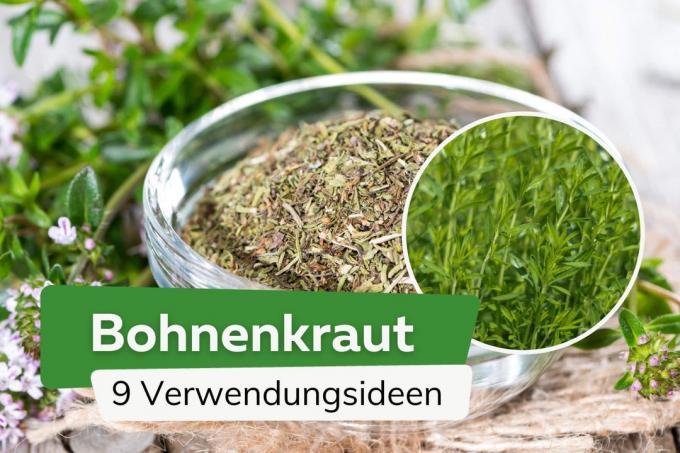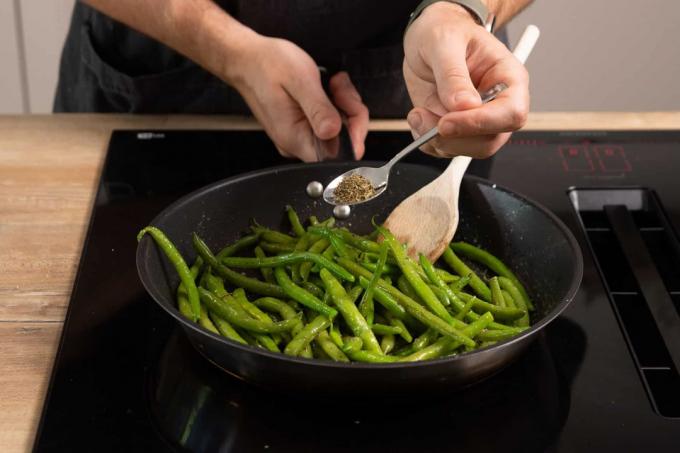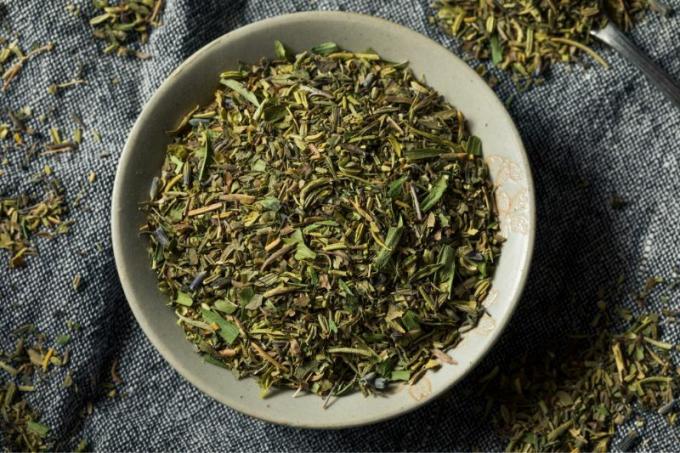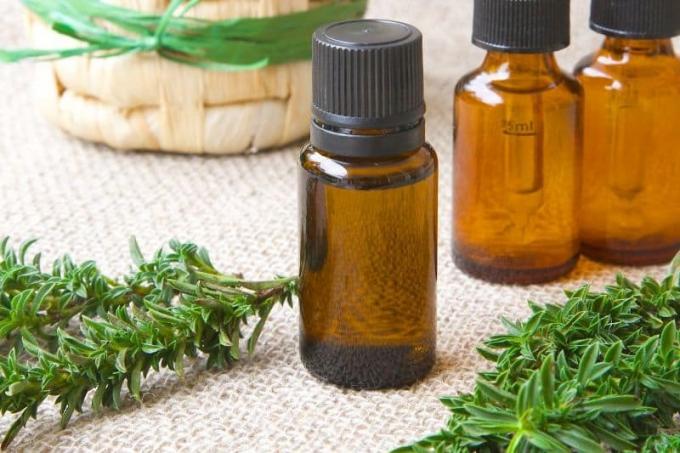
Annual or perennial Savory can be used in many ways in the kitchen. In addition to its culinary use, the herb is used in folk medicine and helps to drive away annoying pests in the garden.
To the point
- Savory as an accompaniment to dishes with beans or meat
- dried herb can be used for herbal salt or preparation oils
- Put fresh cabbage in vinegar
- Savory as part of spice mixtures such as Herbes de Provence
- Savory manure to combat aphids
Table of contents
- Harvest savory
- Companions to meals
- Pickled vegetables
- Spice mixtures
- Help with insect bites
- Seasoned Salt
- Herbal vinegar
- Herbal oil
- Plant protection products
- tea
- frequently asked Questions
Harvest savory
You can use the popular herb for cooking from June until September to harvest. Please note that harvesting can take place both before and after flowering. The advantage before flowering is that the aromas are significantly stronger than after flowering.
- collect on a dry and not too hot day
- Harvest savory in the morning
- Use scissors or a sharp knife
- Cut stems halfway
- Possibly. already bundling for the next steps

A distinction is made between mountain savory, which is present all year round be grown and summer savory, which can be harvested from July to October.
Companions to meals
Savory is a popular culinary herb and is indispensable in the preparation of bean dishes. Savory goes well with meat dishes, especially if they have a high fat content. But savory can also be used in many ways for vegetarian and vegan dishes.

Use:
- Cook fresh or dried savory as a shoot
- remove at the end of the cooking time
If you don't just want to flavor the dish, but also want the savory to stay in the dish, finely grate the herb. Then you no longer have any shoot tips in the dish, which can be responsible for an unpleasant mouthfeel.
Pickled vegetables
The savory is used as a spice for any pickled vegetable stock. Again, it goes ideal with pickled beans, and the herb also goes very well with zucchini or pumpkin.
Basic recipe for vinegar broth:
- 500 ml white wine vinegar
- 500 ml water
- 100g sugar
- a bit of salt
- Savory and other herbs
The broth is brought to the boil and poured over the vegetables that have been layered in jars. The jars are closed and should then be boiled down to ensure their shelf life.
Spice mixtures
The savory can be used in almost any herbal mixture. It is even part of one of the most famous spice mixtures, the herbs of Provence.
Preparing savory for spice mixtures:
- Wash savory under running water
- lay out to dry
- dry at a maximum of 30°C
- Scrape dried herb
- mix with other dried herbs
- Pour into airtight containers

Help with insect bites
When gardening, there are always unpleasant visits from stinging insects. A few fresh shoots of savory can help here.
Use savory for insect bites:
- pluck fresh shoots
- Roughly chop the shoots
- rub the puncture site with the divided shoots
Seasoned Salt
The basis for the herbal salt is dried savory that you collect for spice mixtures. For example, you can further process the spice mixture into a salt or just use the savory.
Make herbal salt:
- Remove shoots from dried herbs
- Mix in portions with salt and grind together in a mortar
- Always store larger amounts of salt in tight containers and only pour small amounts into salt shakers
To ensure that the salt and cabbage are evenly distributed, you should grind them together in a mortar. Alternatively, you can pour coarse salt and dried, coarsely chopped herbs into a spice mill and grind them fresh straight away.
Herbal vinegar
You can use savory to create a particularly aromatic vinegar that goes well with salads with beans.
Instructions for making herbal vinegar:
- Wash cabbage clean
- pat dry
- Pour savory into a large jar or bottle
- fill with white wine vinegar (herb must be covered)
- Let stand for at least four weeks
- Filter and bottle
Herbal oil
Only use dried savory for herbal oils. With fresh savory there is a risk that it will start to mold or ferment.

Production of herbal oil:
- Roughly chop the dried herb
- Pour savory into a glass
- Top up with a high-quality oil such as pure sunflower oil or olive oil
Depending on the base oil used, you can even use the starter oil with savory for frying. In this case, the base oil must be an oil that can be heated to high temperatures.
Plant protection products
If savory becomes overwhelming in the garden and can no longer be used in large quantities for culinary purposes, you can use it as a plant protection product. Manure helps very well against pests such as aphids due to its high content of essential oils.
Production of manure:
- Roughly chop the savory
- Fill container 2/3 full with cabbage
- pour in water
- close with lid
- Leave in a partially shaded place for at least four to six weeks
- Dilute manure in a ratio of 1:10
- Spray affected plants with it
tea
Savory is good for the digestive system and is used in ancient herbal books for a variety of ailments, from an upset stomach to flatulence. It is also said to have an antispasmodic effect on coughs.

Preparation of tea:
- boil water
- Use 1 teaspoon dried or 2 teaspoons fresh herb per cup
- Put the herb in a tea strainer or directly into the cup
- Pour the hot water over it
- Let it steep for 5 – 10 minutes
- Remove herbs
- let it cool down
- drink in small sips
- Drink a maximum of 2 cups per day for two days in a row if you have symptoms
Because you can also use tea against it Aphids on houseplants use. To do this, leave the herbs in the water overnight and spray the plants with the cooled tea.
frequently asked Questions
Store the dried savory in airtight containers such as screw-top jars. The jars should be kept dark so that the color of the dried herbs does not fade too quickly due to UV radiation. You can store the savory as whole shoots in the containers or strip off the dried leaves beforehand.
Depending on how it is stored, savory can last up to a year. If you store the dried herb in airtight containers, you can preserve the essential oils even longer. If the dried savory no longer smells aromatic, you should dispose of it in the compost, because then it hardly contains any ingredients.
Yes, freezing is possible. However, there are no differences in quality to dried savory. To freeze the savory, wash the savory and dry the shoots. Strip the leaves and place them in freezer-safe containers.
